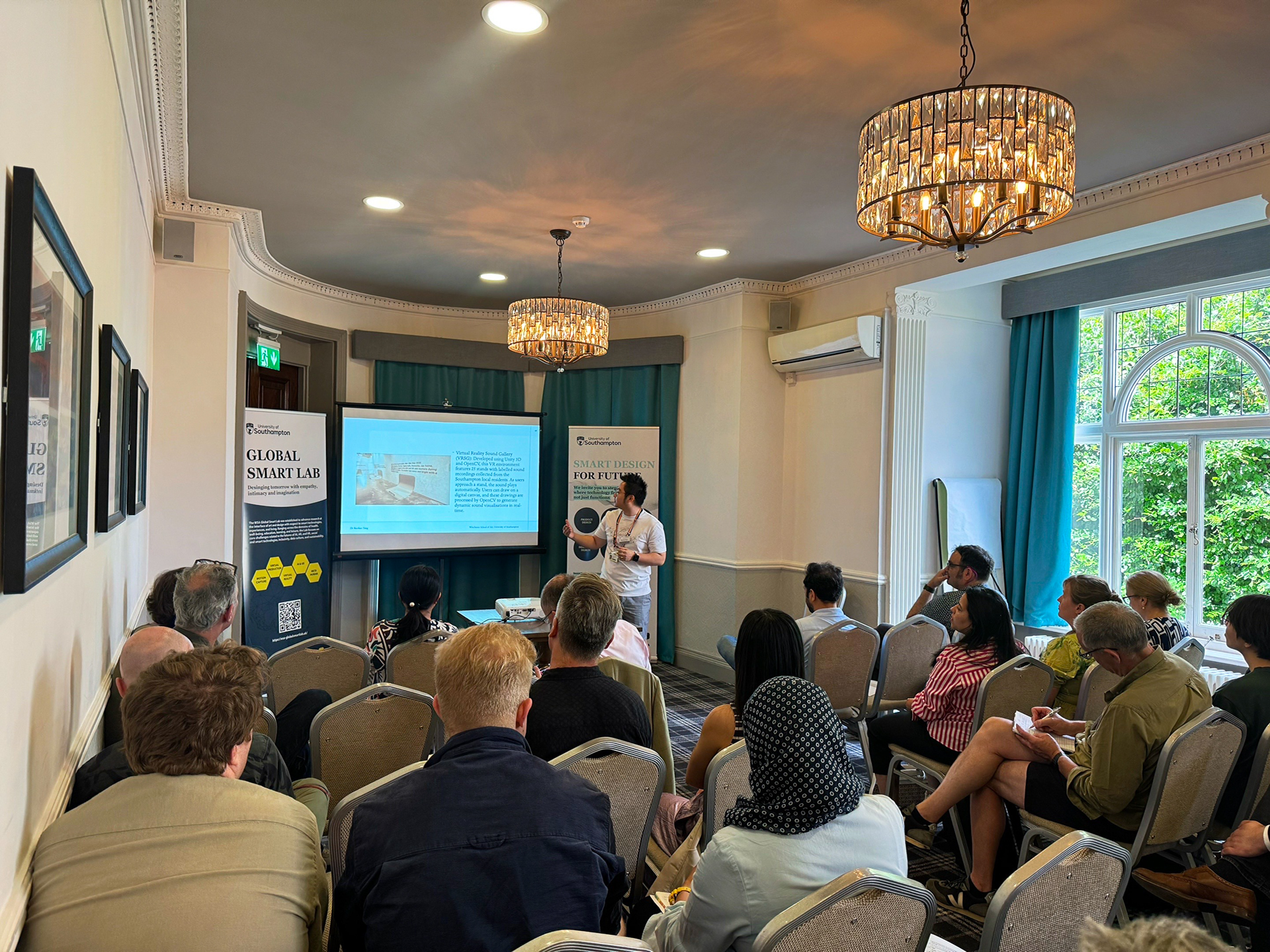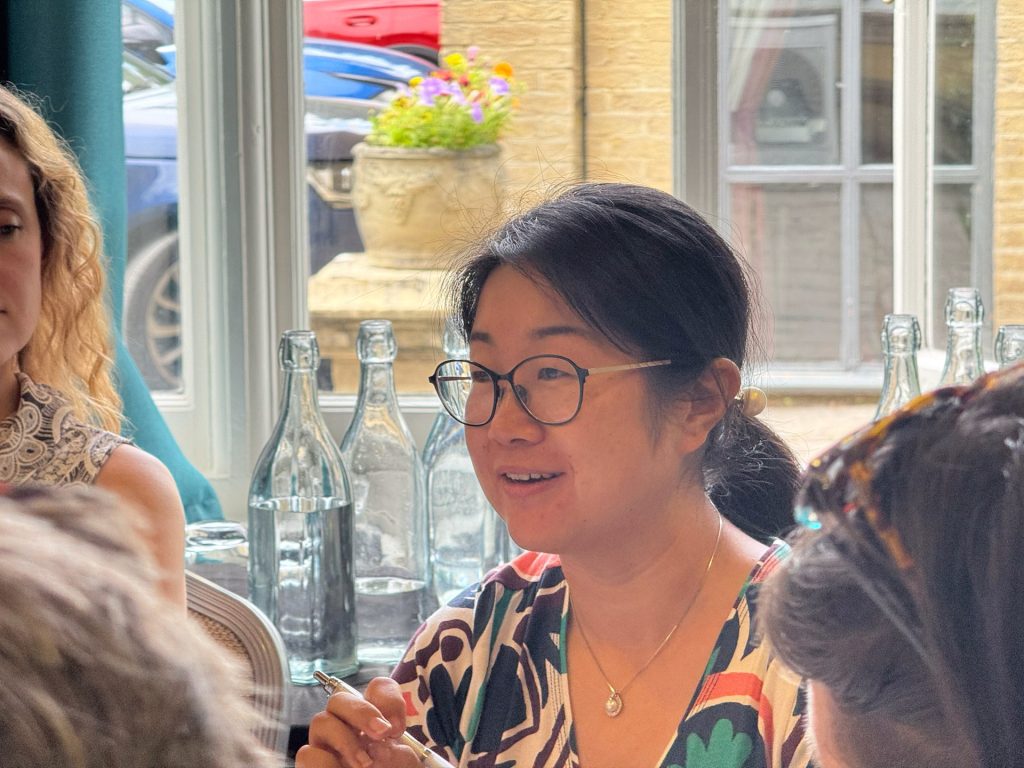
Led by Professor Yuanyuan Yin, Director of the Global Smart Lab and Research Lead for the Department of Design at Winchester School of Art, University of Southampton, Beyond the Exhibit was a landmark collaborative workshop exploring how immersive technologies are reshaping the future of cultural heritage exhibitions.
The event brought together leading voices from museums, academia, technology, and the cultural sector. Delegates from some of the UK’s most significant cultural institutions – including the British Museum, National Gallery, and Royal Navy National Museum – joined researchers and technologists to explore the enormous opportunities presented by VR (Virtual Reality), MR (Mixed Reality), AR (Augmented Reality) and Generative AI.
It was an inspiring day of collaboration and knowledge-sharing, sparking new conversations, partnerships, and possibilities for the future of digital heritage.
Morning Talks: Insights from Across the Sector
The morning featured a series of thought-provoking talks that showcased both personal experience and pioneering research projects. Speakers shared how immersive technologies are being used to transform exhibitions – not as novelties, but as purposeful tools for storytelling, education, and inclusion.
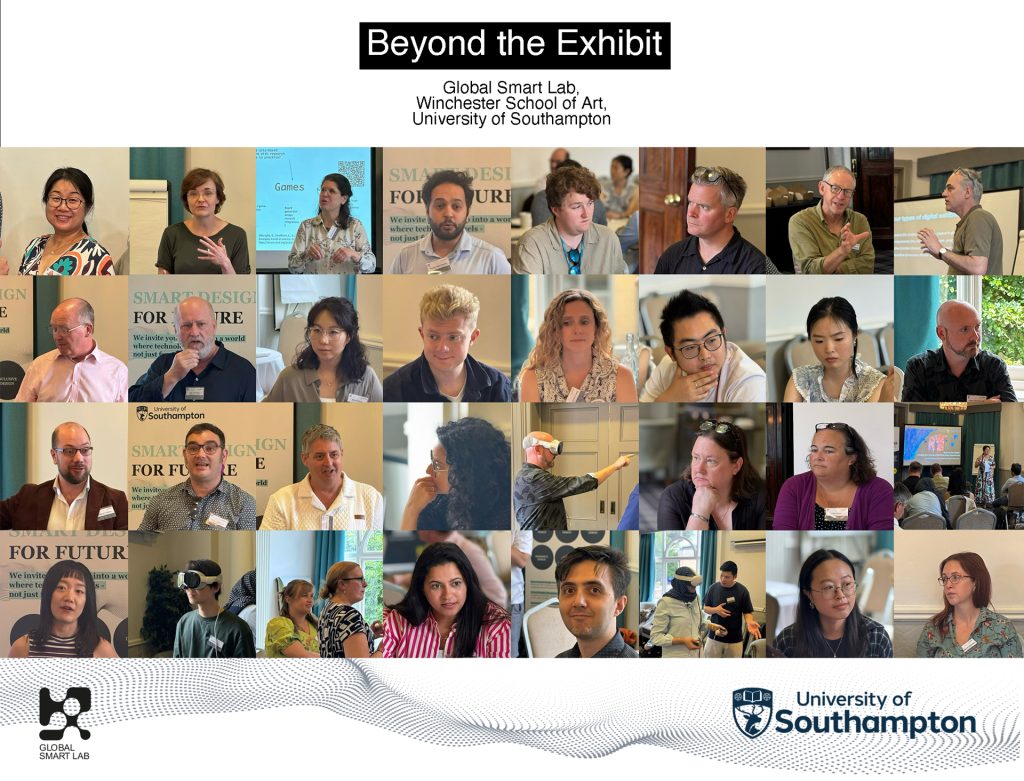
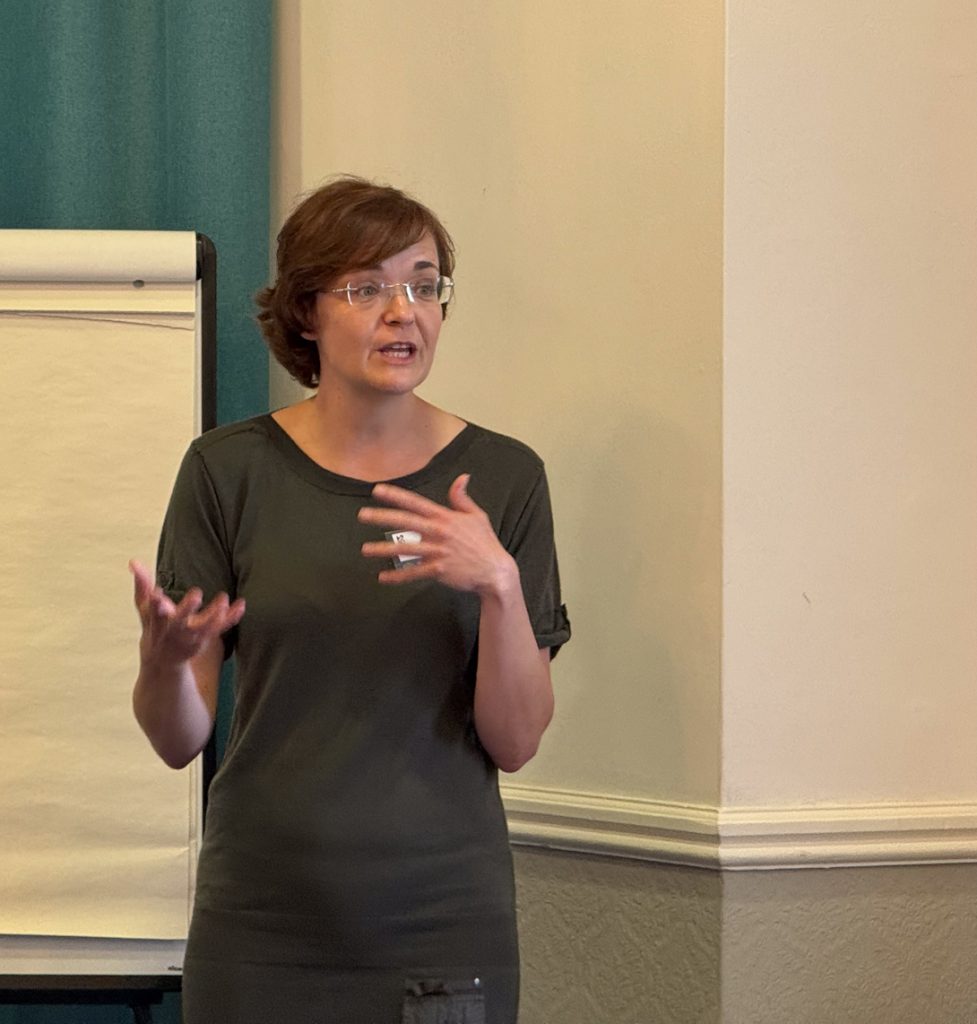
Jaane Rowehl (Hampshire Cultural Trust) reflected on the creation of 878 AD, an immersive exhibition in Winchester developed in partnership with Ubisoft, blending Assassin’s Creed’s cinematic world-building with rigorous historical storytelling.
John Stack (National Gallery) drew on his wealth of experience to candidly explore what it really takes to embed immersive technology in large-scale museum programmes.
Nathan Cornish (PhD, Digital Humanities) presented his fascinating AI research project GPT1400: The AI Apothecary, which explores how algorithmic image generation connects with medieval approaches to sharing knowledge through illustration.
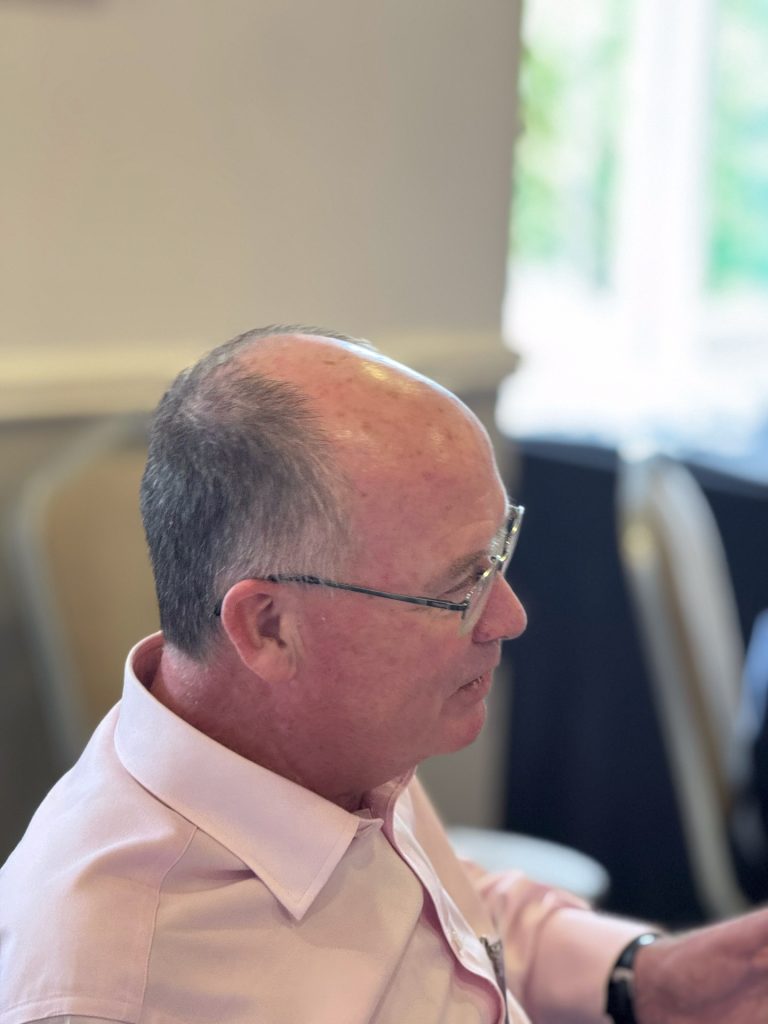
Daren Bowyer (The Gurkha Museum) spoke powerfully about inclusivity, detailing how his museum is working to reflect Nepalese voices and histories while moving beyond outdated colonial narratives.
Dr Vanissa Wanick (University of Southampton, Winchester School of Art) introduced key principles of game design for cultural heritage, showing how playful mechanics can enhance engagement across both digital and analogue experiences.
Dr Ramy Hammady (University of Southampton, Winchester School of Art / Global Smart Lab) explored the convergence of AI and XR, highlighting how adaptive storytelling and multilingual access can transform visitor experiences.
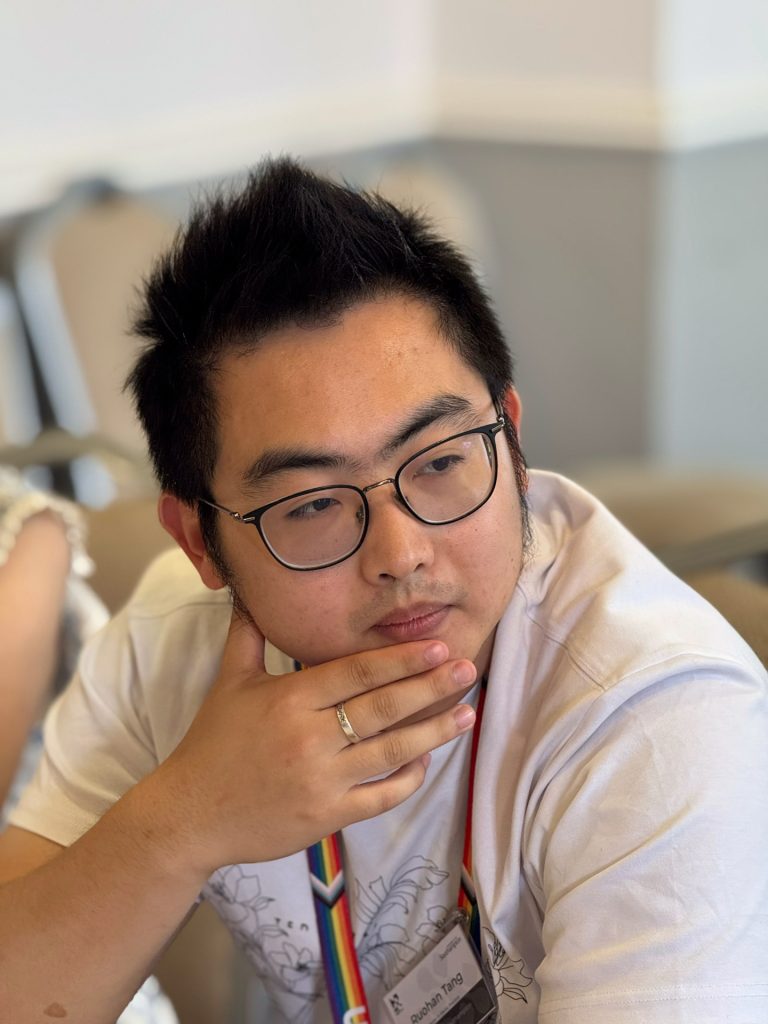
Dr Ruohan Tang (University of Southampton, Winchester School of Art / Global Smart Lab) presented Sonic Cartographies, an ambitious VR sound-visualisation project that invites audiences to explore co-created narratives through sound.
Dr Yingying Yan (Historic England) discussed how structured digital data platforms, like the Marine Historic Environment Record Service for England, can support richer immersive heritage storytelling.
James Miles (Digital Humanities 3D Specialist) weighed up the strengths and limitations of AR and 3D printing to bring otherwise inaccessible artefacts to life.
Dr Roy Hanney (Southampton Solent University) advocated for more participatory approaches to digital heritage, drawing on local projects to show how immersive storytelling can create deeply personal connections.
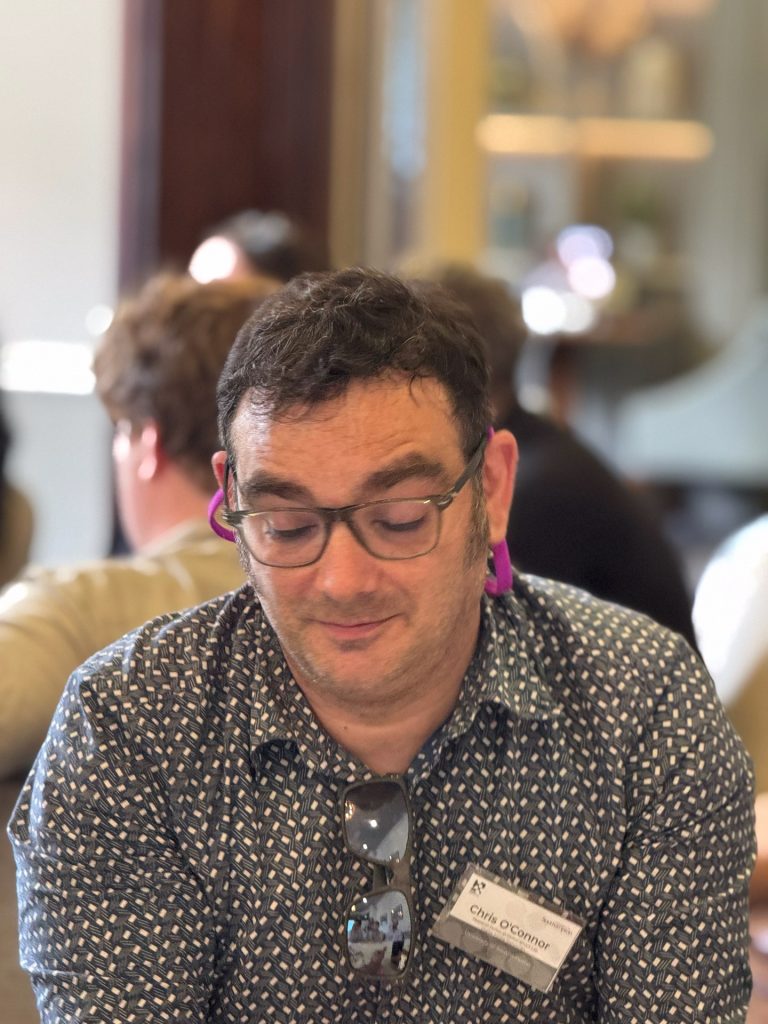
Christopher O’Connor (University of Southampton, Winchester School of Art / Global Smart Lab) shared his experience of using VR and AR to enhance teaching and exhibitions, reflecting on lessons learned during the pandemic and recent VR projects in China.
Dr Nic Fair (Electronics and Computer Science, University of Southampton) explored generative AI through a Tudor House Museum case study, addressing both its potential for personalisation and current usability challenges.
Dr Stephen Tatlow (University of Gloucestershire) rounded off the session with an engaging talk on authenticity in sound design for immersive experiences, a vital but often overlooked dimension of digital heritage.
Afternoon Roundtable: Collaboration and Reflection
The afternoon saw participants dive into lively discussions led by Dr Ramy Hammady and Dr Ruohan Tang. Ideas flowed freely as attendees reflected on the opportunities and challenges of immersive exhibitions.
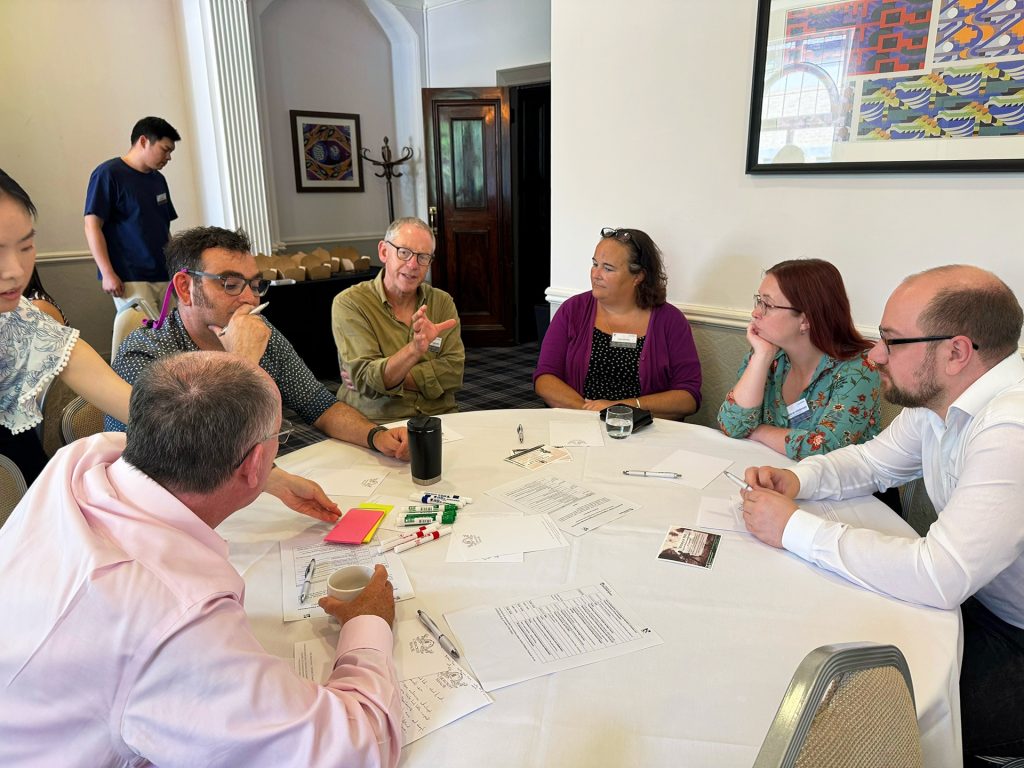
One message came through loud and clear: immersive technology should never be a gimmick. When used with purpose, it has the power to foster deeper engagement, better educational outcomes, and more inclusive storytelling.
The roundtable tackled practical challenges – from funding and training needs to institutional barriers and ethical design. A collaborative mind-mapping session generated fresh ideas and strengthened the sense that innovation flourishes when different perspectives come together.
Who Was in the Room?
It was a privilege to welcome representatives from so many influential institutions, including:
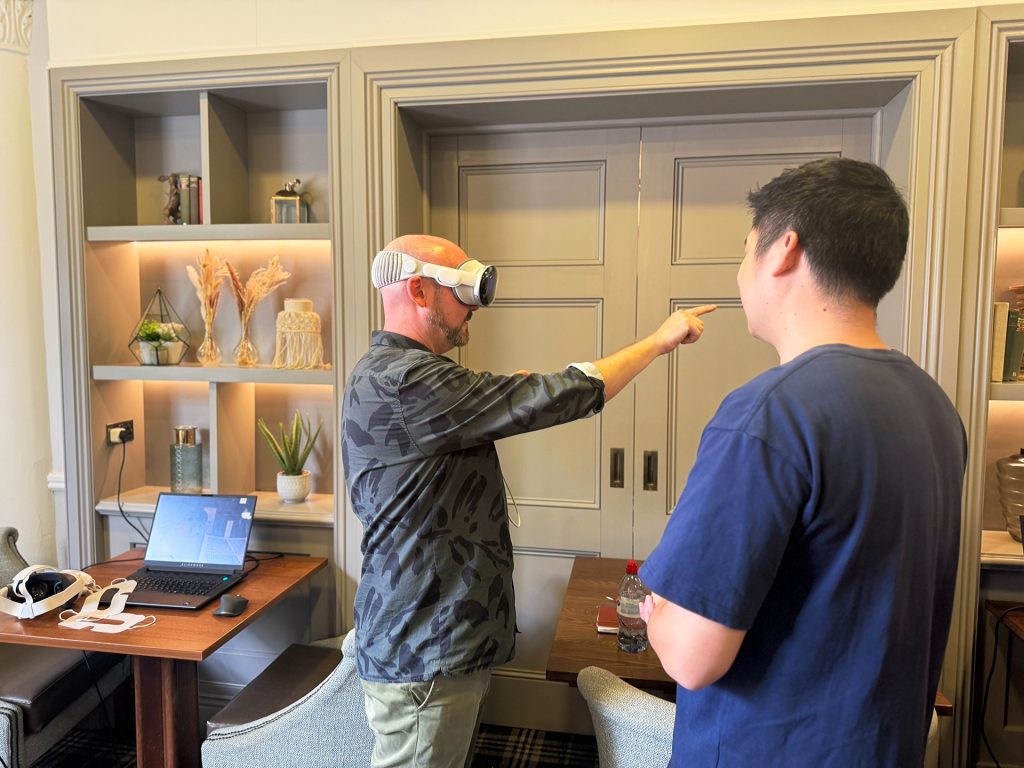
The British Museum • Royal Navy National Museum • The National Gallery • Gurkha Museum • SeaCity Museum • Winchester City Council • Hampshire Cultural Trust • Historic England • Southampton Solent University • University of Southampton • University of Bristol • University of Gloucestershire • Digital Humanities • Electronics and Computer Science • Winchester School of Art
The mix of expertise and creativity made the event a real highlight – a day of building relationships, sharing knowledge, and imagining the future of cultural heritage together.
Looking Ahead
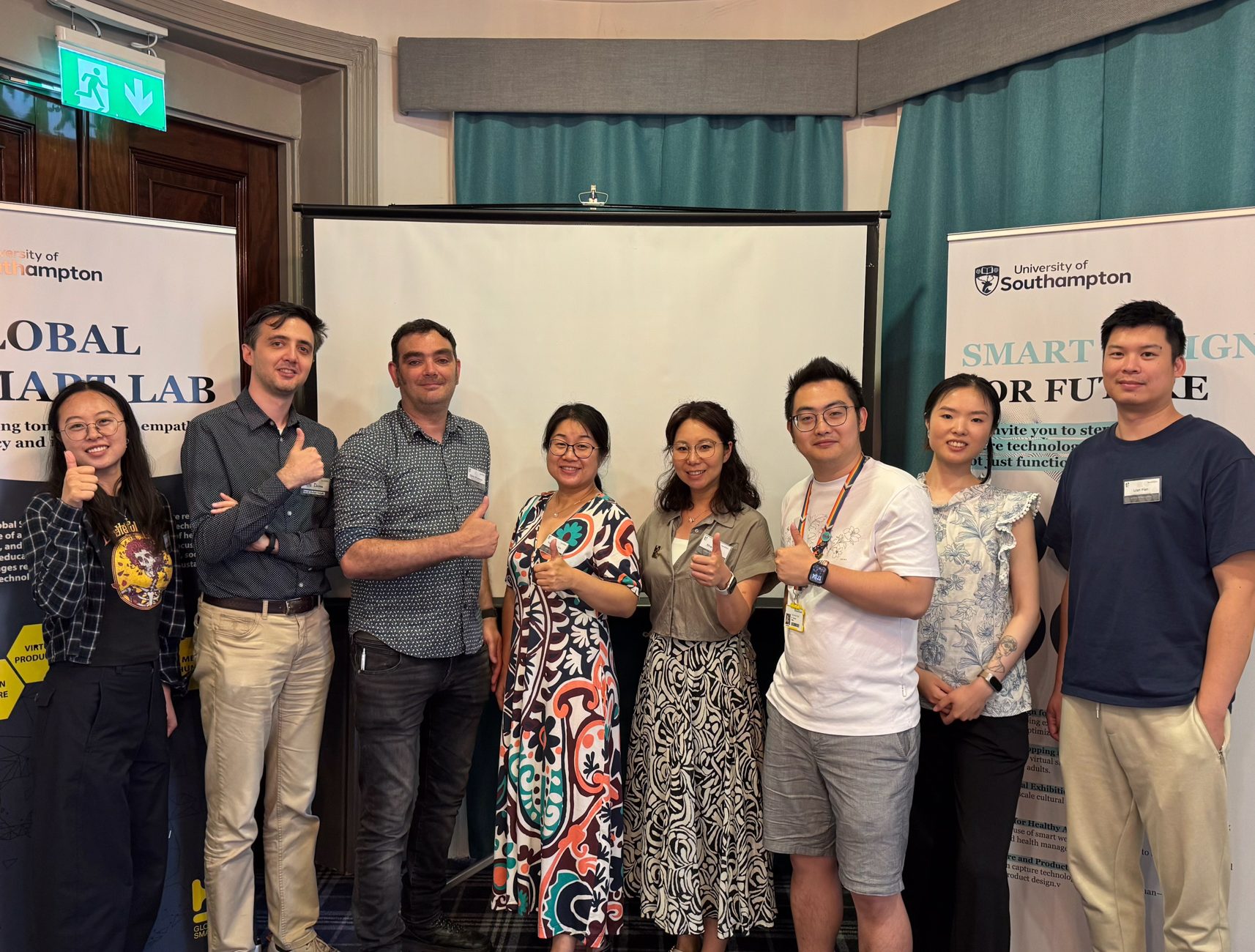
Beyond the Exhibit was not just a showcase of immersive practice. It was a catalyst for collaboration, critical discussion, and shared ambition.
As the cultural sector adapts to rapid digital change, the workshop reinforced that immersive technologies should be used with purpose – to tell inclusive stories, create meaningful visitor experiences, and deepen public engagement.
True immersiveness, as many speakers reminded us, isn’t just about technology – it’s about people, place, sound, and meaning.
The Global Smart Lab is excited to continue this dialogue and build lasting partnerships with museums, heritage organisations, and academic institutions. Together, we can shape a more accessible, dynamic, and meaningful future for digital heritage.

